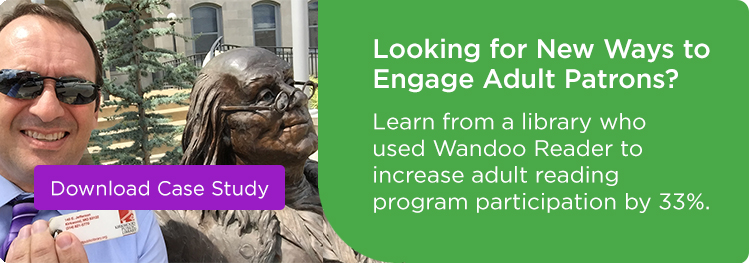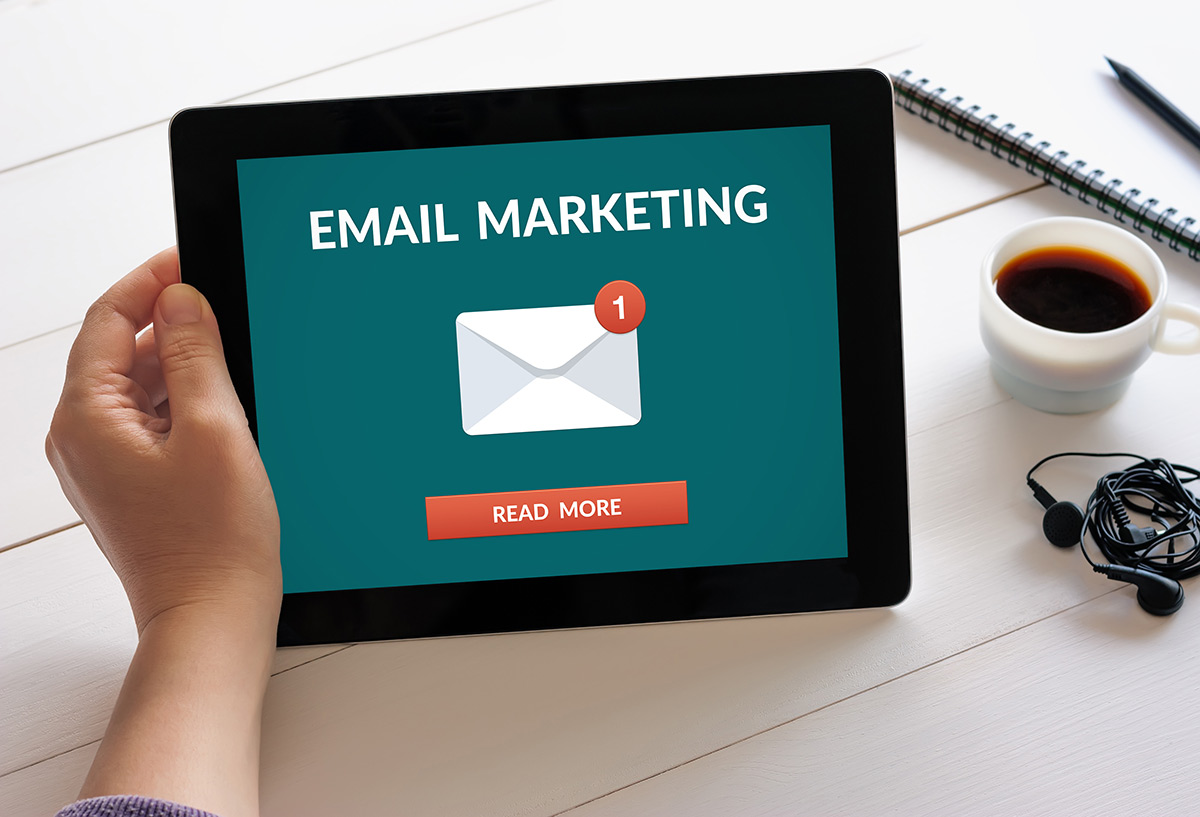
Tips for Marketing Your Summer Reading Program on Your Website and via Email
Most libraries promote their summer reading programs on their websites and in their newsletters (both email and print), as they have the most control over those outlets. These forms of digital marketing work well for all programs and are consistent ways to reach patrons who can’t make it to the physical branch.
If you’re looking for more effective ways to spread the word about your summer reading program through web and email marketing, read on for tips on how to make the most of these promotional platforms.
Creating Effective Webpages
Follow these best practices to ensure you’re maximizing your website’s impact on your summer reading program’s success.
- Have at least one webpage — or landing page — for your summer reading program, if not one for each age group. A landing page is a page on your website created specifically for promoting a certain event, resource or campaign. Having one for your summer reading program is key since it will serve as a single place for more information about participating. If you have the resources, create separate landing pages for each age group that outline the program you’ve developed for them. On each page, include all of the key program details. You want to make it easy for prospective participants to find and use the page that’s most appropriate for them. (See the checklist below for how to do this.) Since adults often sign up their children for reading programs, consider having a prominent link to the adult reading program registration on your children’s page as well. It’s true that creating separate landing pages can take a lot of time and effort, so it’s fine if you plan to stick to one. If that’s the case, be sure to include clear, identifiable links to the login pages for each of your programs.
- Make regular updates to your reading program pages. Highlight the community’s progress on an ongoing basis with a graph that shows how many books or minutes participants have read, how many challenges participants have completed or whatever else you’re tracking. This will help show your community members that your summer goal is attainable — as long as they pitch in to help your community meet it!
- Use eye-catching, consistently branded graphics to draw patrons’ attention to the program pages. You can use a free, easy-to-use program like Canva to design these digital marketing pieces, which will serve as ads on your website. Make sure your graphics and any other links are prominent and very clearly clickable by including actionable phrases like “Learn More” or “Register Now.”
Landing Page Checklist
When you’re working on your program landing page(s), keep this list handy and check off each item once you’ve got it covered:
- Eye-catching graphics that are consistent with the rest of your program’s marketing materials. One library we’ve worked with had great success with including rotating gifs, or animated images, that showed all of their prizes on their landing pages. This way they were able to show adults that the prizes weren’t all for kids.
- Reading milestones that will be tracked (and sneak peeks at a few associated prizes)
- Program goals and simple tracking instructions
- Visual tracker of progress toward your community’s goal. This will help participants see that their contributions are having an impact.
- Timing, including the registration opening date, registration deadline and the program end date
- Simple registration instructions. The less clicks and work necessary for patrons, the better!
Leverage Your Email List
Once you have your landing page details down, you can start thinking about how you’re going to send people there. Email can be a good way to promote your summer reading program because you already know that those who signed up for your email list are interested in learning more about what your library has to offer.
- Keep track of who participates in your program each year. This is easy to do if you use Wandoo Reader. You can email past program participants a friendly custom message with a link to register. This encourages return participants and makes it easier for people to register. After all, the easier it is to register, the more participants you’ll have, and Wandoo Reader streamlines registration for those who have participated in your reading programs before.
- Plan to send multiple emails. Your email marketing software should allow you to create groups and filter out those who have already registered. Be sure to take advantage of this feature. Plan to send emails before your program starts, reminders midway through the program and a final email that includes a survey so you can collect feedback.
Set Up an Email Communication Schedule
Use the communication schedule below as a guide as you plan your own email schedule, but keep in mind that you know what will work best for your library. If your patrons have expressed that they don’t want to receive a lot of emails from the library, this type of promotion may not be successful. If you’re not sure how patrons will respond, give emails a try to see if they resonate with your audience.
- One week before registration launches (one email, but possibly more if you’re comfortable with filtering): Send a “Save the Date” email to the addresses you have on file. Emphasize that your library has something for all ages and that it’s easy to participate in the program. Point out that participants can track magazines and books, and that those parents who read to their children count once for each child and once for the parent reader! They can track e-books and audiobooks as well to earn prizes from local businesses. If you’re comfortable with your email marketing software, try filtering out those who participated in previous years’ programs so you can send them a special customized message. Use the template below for inspiration.
- On the registration launch date (one email): Send another email to all the email addresses you have on file. Make this email short, sweet and to the point, and include a prominent registration link.
- On the program launch date (two emails, perhaps more if filtering): To those who have registered, send a message announcing the program’s launch. Remind registrants about important dates, and provide a refresher on what they should track and how they should track it. To those who have not registered, send a message to remind them about your program. Consider doing some filtering and grouping of these emails. If you see that a child has registered but her parent has not, send a special message to the parent that briefly explains the adult reading program and include a link to register. Some parents might not realize that your library has something to offer them too!
- One month in (two emails): Consider sending two reminder emails: one to those who haven’t registered yet and one to those who have registered that serves as a reminder to track their reading progress. If you have images from library events associated with the summer reading program or images of patrons with the prizes they’ve won, share them for inspiration. Libraries that use Wandoo Reader can take this opportunity to entice readers to participate in their program by highlighting one of their most popular challenges.
- Two months in (two emails): Plan to send your last reminders during the second month of your three-month program. Remind those who haven’t registered yet that they still have one month left to participate. Send a separate email to those who have registered that serves as a reminder that they have one month left to track their reading progress. If you set a big goal, like having your community read a certain number of books over the summer, share the progress made so far to motivate them to keep reading.
- On the program end date (one email): Send those who participated a thank you message, and include a link to a survey that collects their feedback on what they liked about the year’s program and what they think can be improved. If you have prizes left over, drive survey submissions by offering prizes as incentives to those who fill out the survey.
Sample Email to Past Participants
Use this example as inspiration for the email that you send to spur past participants to come back for more summer reading:
Subject Line: (First Name), what are you reading this summer?
(First Name),
Thanks for participating in last year’s summer reading program! I am excited to let you know that registration for this year’s program is now open. Remember all of the fun prizes that you earned for reading last year? Well, your favorite goodies are back and we’ve added even more to make this our best year yet!
Register today.
I’m excited to see you at the library this summer!
(Librarian Name)
*By following these tips, you can make the most of your library’s web and email marketing tools and ensure that you are effectively getting the word out about your summer reading program.




